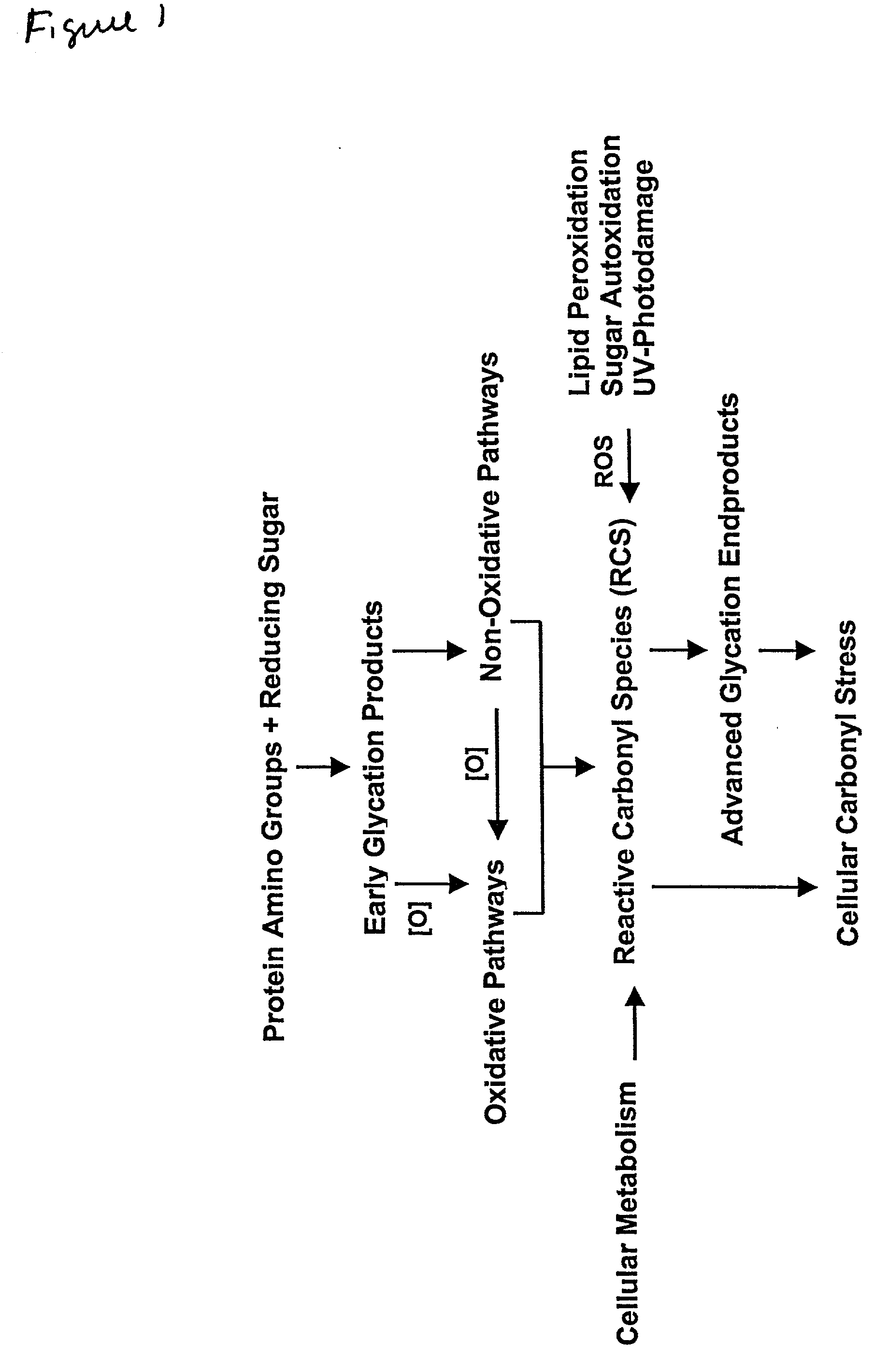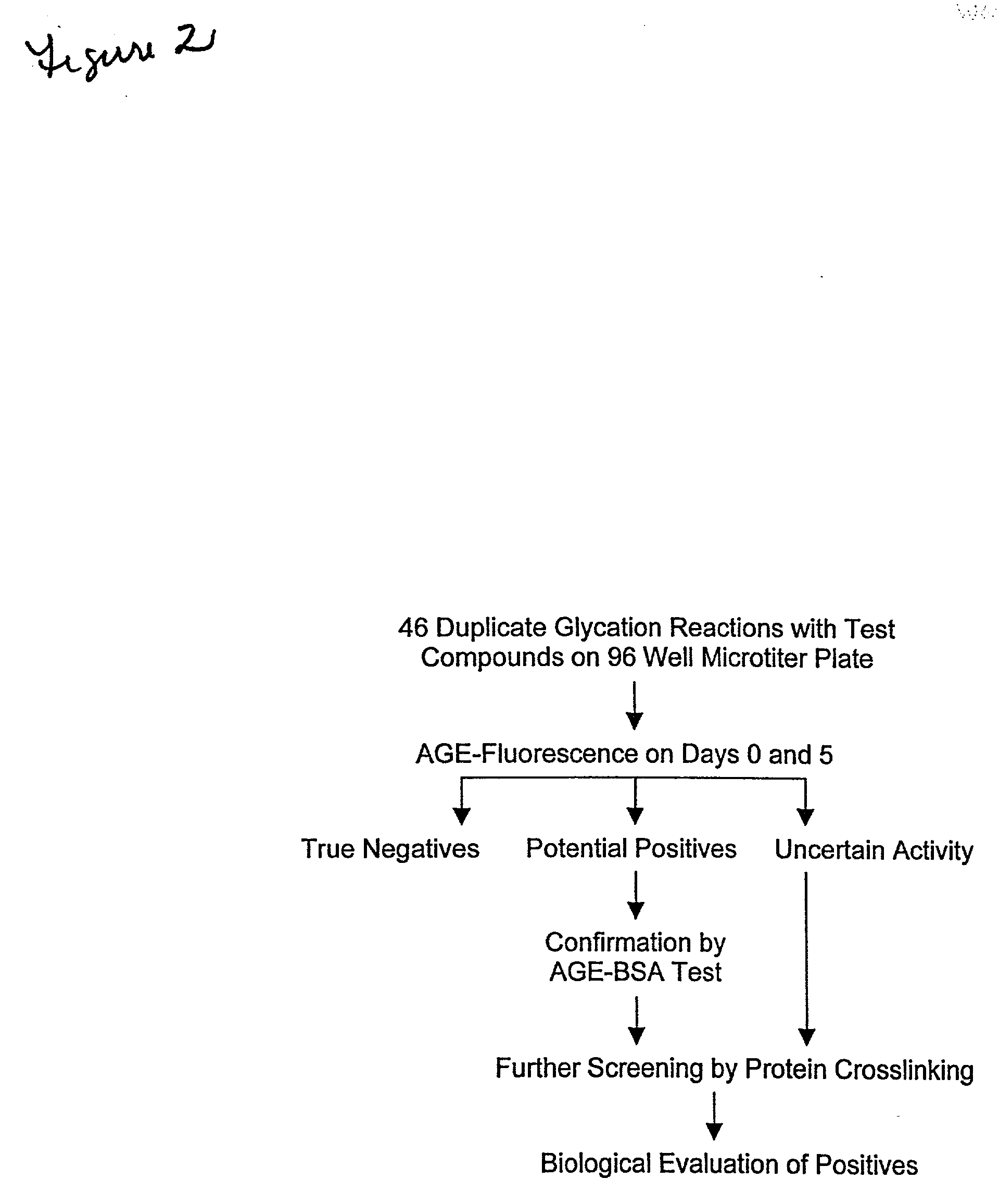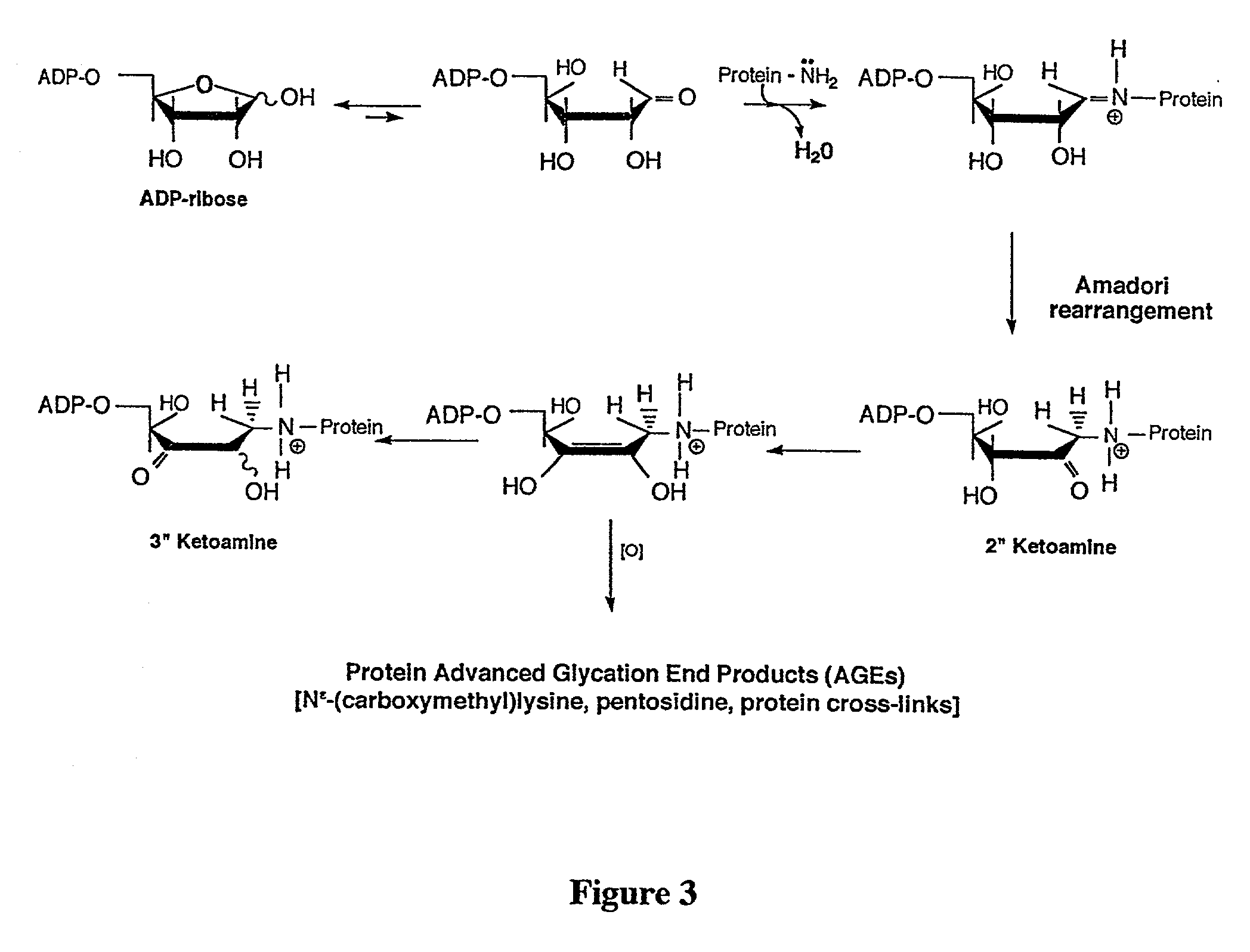Method for identifying regulators of protein-advanced glycation end product (protein-AGE) formation
a technology of glycation end product and end product, which is applied in the field of identifying the regulator of protein-advanced glycation end product (proteinage) formation, can solve the problems of tissue deterioration and aging being widely associated, and forming a vicious cycle of ros and rcs production
- Summary
- Abstract
- Description
- Claims
- Application Information
AI Technical Summary
Problems solved by technology
Method used
Image
Examples
example2
[0042] The foregoing example discussed true positives, true negatives, and false negatives. False positives are also possible, however. These suppress the formation ofAGE-fluorescence by physical interference with fluorescence measurements. In order to eliminate such compounds, they are tested for their ability to quench AGE forms of bovine serum albumin ("AGE-BSA"), in the following assay.
[0043] AGE-BSA was prepared in accordance with Ikeda, et al., Biochemistry 35:8075-8083 (1996), incorporated by reference. The AGE-BSA was then added to a well which contained the test compound ADP-ribose and histone H1, and fluorescence was measured. The value obtained was compared to a value obtained when AGE-BSA was added to a well containing the inhibitor aminoguanidine. A decrease in AGE-BSA fluorescence in the presence of the potential compound results in classification as a negative, and exclusion from further screening. A general summary of the screening methodology that is elaborated in t...
example 3
[0044] This example describes a secondary screening, to further evaluate compounds which were deemed positive following the assays of examples 1 and 2. Specifically, it will be recalled that each sample was tested in two wells, one of which was tested in example 2, supra. The sample not used was analyzed, via 12% SDS-PAGE, followed by silver staining, in order to visualize protein cross-linking. This serves as an independent measure of glycation caused protein damage. A lack of protein damage indicates that the test compound actually does inhibit glycation.
[0045] Results of one such assay confirming a positive using fluorescence are shown in FIG. 13, and using the crosslinking test in FIG. 14.
example 4
[0046] These experiments describe the further development of the assay discussed supra.
[0047] To elaborate, histone H1 was isolated from fresh calfthymus. First, chromatin was extracted from samples of fresh calf thymus, via extraction with 0.14M NaCl and 0.05M Na.sub.2S.sub.2O.sub.5, pH 5, in accordance with Wondrak, et al., Biochem J. 351: 769-777(2000), incorporated by reference. After repeated extraction with 5% HClO.sub.4, and centrifugation at 1500.times.g, the histone H1 was precipitated from supernatant by adding TCA (20% final concentration v / v). Histone H1 precipitate was collected via centrifugation at 12,000.times.g, and deionized water. The sample was subjected to extensive dialysis (MW cut-off: 12,000-14,000) against water for 48 hours, and then lyophilized. SDS-PAGE (12%), was used to analyze sample purity. Any protein collected in this manner was stored at 4.degree. C.
[0048] The histone H1 (1.5 mg / ml) was combined with 1 mM ADP-ribose, in 50 nM KH.sub.2PO.sub.4 buffe...
PUM
| Property | Measurement | Unit |
|---|---|---|
| pH | aaaaa | aaaaa |
| pH | aaaaa | aaaaa |
| volume | aaaaa | aaaaa |
Abstract
Description
Claims
Application Information
 Login to View More
Login to View More - R&D
- Intellectual Property
- Life Sciences
- Materials
- Tech Scout
- Unparalleled Data Quality
- Higher Quality Content
- 60% Fewer Hallucinations
Browse by: Latest US Patents, China's latest patents, Technical Efficacy Thesaurus, Application Domain, Technology Topic, Popular Technical Reports.
© 2025 PatSnap. All rights reserved.Legal|Privacy policy|Modern Slavery Act Transparency Statement|Sitemap|About US| Contact US: help@patsnap.com



